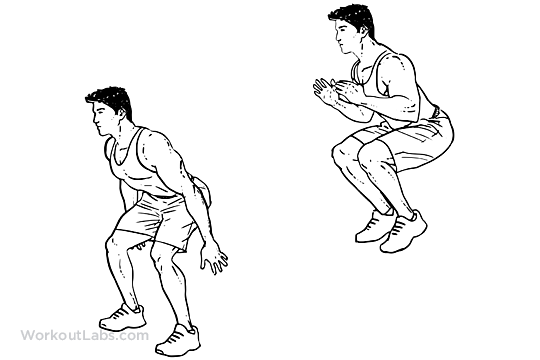


Thus, strategies such as complex training (CT) and plyometric training (PLT) are effective at improving explosive power. Introduction: Explosive power is considered an important factor in competitive events. Compared to traditional training methods, CT seems to produce superior training effects only for 1-RM squat and 20m sprint performance however, these findings were influenced by single studies and should be therefore interpreted with circumspection. However, when directly compared to traditional training methods, only 1-RM squat strength performance and 20m sprint time were superior following CT interventions (95% CI 0.2%-13.7% and 95% CI -1.6% to -0.1%, respectively) CONCLUSIONS: CT is an acceptable method for improving jump, strength and sprint performance in athletes. The analysis comprised 33 studies and a total of 1064 healthy participants. Meta-analyses were performed using a random-effects model with the dependent variables countermovement jump (CMJ) height, squat jump (SJ) height, one-repetition maximum (1-RM) squat performance and sprint time for 5m, 10m, 20m, 30m and 40m, respectively. complex training ) on lower-body performance.Ī search of five electronic databases (PubMed, Web of Science, SportDiscus, CINAHL and Scopus) was conducted to identify all publications up to 7 March 2018. The aim of the present meta-analytical review was to determine the effectiveness of training programmes combining higher-load and lower-load exercises in one workout (i.e. Post hoc tests indicated significant performance improvements for the CCT-2 and CCT3 groups for all dependent variables (Hedge’s g = 0.28–3.26, %Δ = 2.4–16.7), including the 15 and 30 m linear sprint speeds (p < 0.001), medicine ball throw (p < 0.001), standing long jump (p < 0.001), countermovement jump with arm thrust (p

Significant group–time interactions were observed for all dependent variables (all p < 0.001, ɳp2 = 0.51–0.78) using ANOVA. The tests included the assessment of 15 and 30 m linear sprint speeds, upper (medicine ball throw) and lower limb muscle power (standing long jump and countermovement jump with arm thrust), muscle strength (isokinetic peak knee extensor/flexor torque), and change-of-direction speed (modified agility T-test (MAT)). Selected measures of physical fitness were assessed pre- and post-six weeks of training. Forty-five male participants aged 21.4 ± 2.0 years were randomly assigned to either two weekly CCT sessions (CCT-2 n = 15), three weekly CCT sessions (CCT-3 n = 15), or an active control group (CG n = 15). three CCT sessions per week on measures of physical fitness. However, no previous study has attempted to compare the effects of load-equated two vs. Such a combination of exercises targets multiple aspects of the force–velocity curve and may thus lead to improvement of various components of physical fitness. CONCLUSIONS: The use of plyometric and resistance training within the same training session can be used interchangeably, irrespective of exercise order and gender.Ĭomplex contrast training (CCT) is an exercise modality that utilizes both high-load resistance activity and low-load plyometric activity in a set-by-set fashion within a single exercise session. /s for both legs in both genders, no between group differences were observed for any performance value.RESULTS: While all programs produced gains in vertical jump performance (p < 0.01) and isokinetic leg strength (p < 0.01, p < 0.05) except for quadriceps 60 All groups completed a similar volume and intensity of training. The first group performed traditional combination training (TC n = 8) involving plyometric training exercises at the beginning of a workout session before resistance exercises the second group performed contrast training (CT n = 8) involving alternating resistance exercises with plyometric training from set to set the third group performed complex training (CP n = 8), another form of combination training that involves the planning of several sets of resistance training repetitions, followed by plyometric exercises. METHODS: Twenty-four undergraduate volunteers were randomly divided into 3 groups, each group consisting of 3 female and 5 male students. OBJECTIVE: To compare the order effect of a combination of plyometric and resistance training sessions on isokinetic leg strength and vertical jump performance in undergraduate students over the course of a 6-week training program. The effect of exercise order incorporating plyometric and resistance training on isokinetic leg strength and vertical jump performance: A comparative study Abstract.


 0 kommentar(er)
0 kommentar(er)
